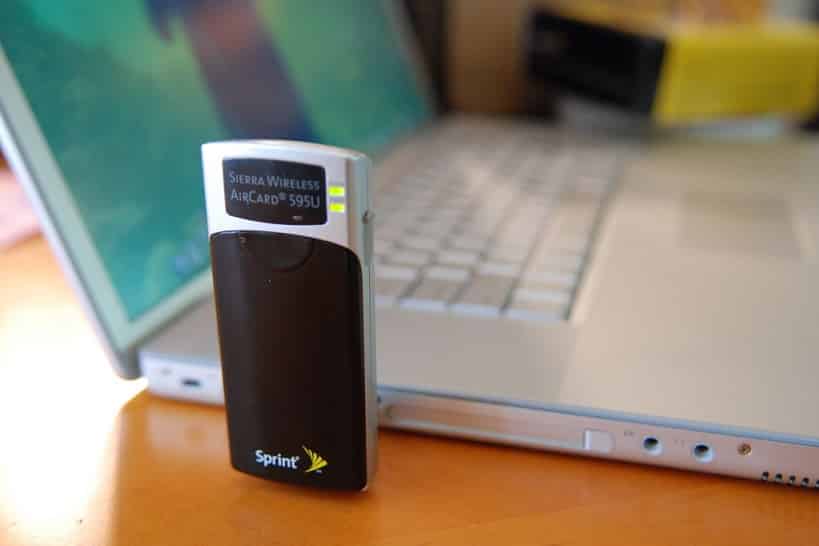
If you travel a lot and find yourself wasting time looking around for a hotspot, you should consider using an aircard which will provide you with Internet connectivity in any location that is within the vicinity of a cellular phone tower. If you can use your cell phone in an area where you are traveling then you can also connect to the Internet to check your messages or view files with an aircard.
What is an Aircard?
An aircard is also commonly referred to as a wireless broadband card and it is a device that you can connect to your netbook or laptop PC to tap into high speed Internet within range of a cell phone signal. It is also possible to connect an aircard to a desktop PC and even older PCs.
The wireless connectivity can cost you anywhere from $45-$60 per month which is paid to the provider of the aircard. The major companies include Verizon, AT&T, and T-Mobile and, if you already have a cell phone service with one of these providers you can simply obtain your aircard from the same company. If this is not the case, you should do some research to discover which company provides the best 3G connectivity in your geographical area or an area in which you are traveling.
How to Use an Aircard
Once you purchase your aircard you simply install any software that may be needed to configure your laptop to work with the aircard. The software is installed from a CD or with some providers the software is already contained in the memory on the aircard. Then you just connect the aircard to your PC via your USB port or card slot depending upon the aircard provider you are using.
Once everything is set up you have broadband access to the Internet as long as you are within range of a cell phone tower. You no longer have to waste time trying to find the nearest hotspot and you can even browse the Internet while you are riding in the car.
Data Transfer Limits
When you are looking to purchase an aircard, keep in mind that some providers do not have a data transfer limit while other providers will limit data transfer according to megabytes. You have a certain amount of megabytes that are placed on the aircard when you purchase it and then if you exceed that limit there is a charge per megabyte that you used for data transfer.
GPS Aircards
Some providers such as Verizon offer aircards with GPS services which works well as long as your mobile device has GPS service capability. This type of aircard can provide broadband Internet access while simultaneously offering GPS services. You simply configure the GPS in the Verizon Access Manager software that is included with the aircard then click on “Start” in the control panel for the GPS on your mobile device to activate your aircard.
Creating a Network with Your Aircard
If you travel with multiple PC users you can use your aircard to create a network for sharing files and folders. The configuration is easy to set up and allows you to communicate with any other computers that are on the network. You set up the network by connecting your aircard to the appropriate port or slot on your PC and then click on “Start” on the main toolbar of your desktop.
Choose “Control Panel” from the menu and then double-click on the “Network” icon and choose “Set Up a Network.” In the new window click on “Wireless” and then enable the feature that allows you to share files. Under “Workgroup” enter “AIRCARD,” close the window, and then restart your PC to allow the changes to take effect.
Improving the Aircard Signal During Travel
If you travel a lot it is likely you will travel to areas where the signal for your aircard is weak depending upon how far away you are from the nearest cell phone tower. In this case you can carry a signal booster with you that is specifically designed for aircards. A signal booster can be quite pricey but if you are on the road a lot you will probably find that it is worth the purchase.
Using an Aircard to Travel Abroad
Most aircard providers will provide you with several gigabytes of data transfer for a specified monthly fee, however if you travel outside the US then roaming fees apply which can be as high as $20 for each megabyte of data transfer you use. If you travel abroad extensively, this can become quite expensive.
The good news is that you can use a provider that offers a SIM (Subscriber Identity Module) card to connect to the network. When you travel abroad you can purchase a prepaid SIM card to use while you travel to other countries. The international pricing tends to be closer to your monthly fee when you are using your service within the United States.